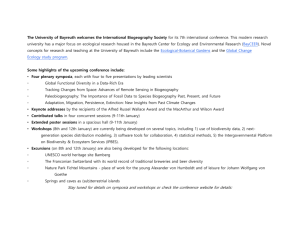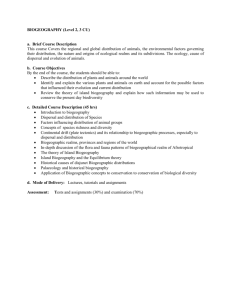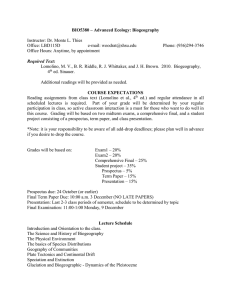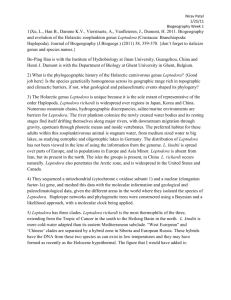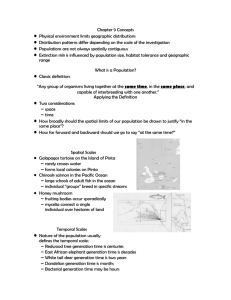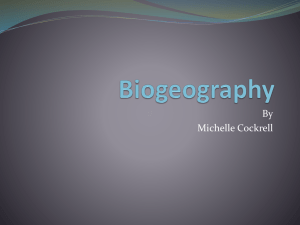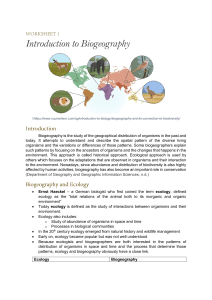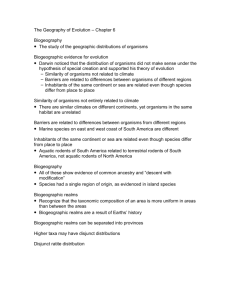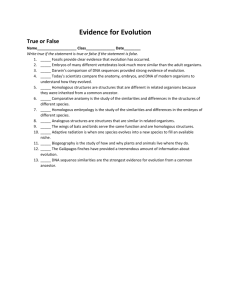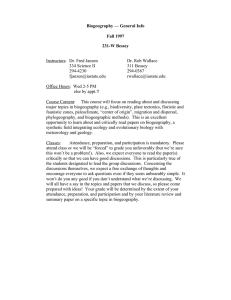Biogeography
advertisement
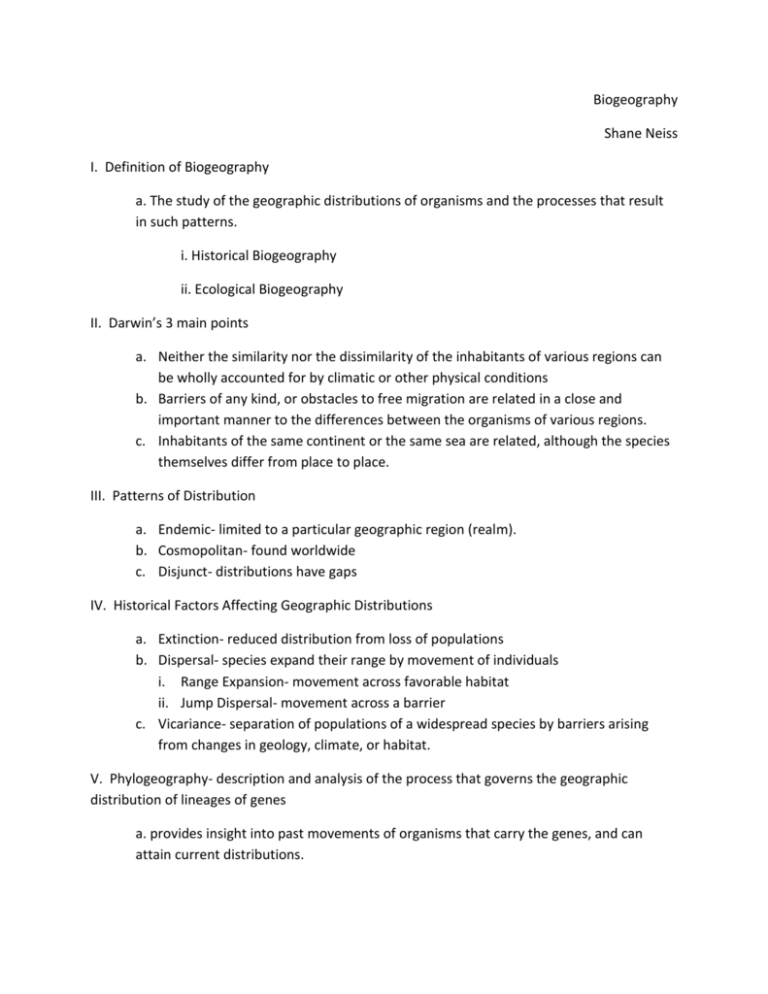
Biogeography Shane Neiss I. Definition of Biogeography a. The study of the geographic distributions of organisms and the processes that result in such patterns. i. Historical Biogeography ii. Ecological Biogeography II. Darwin’s 3 main points a. Neither the similarity nor the dissimilarity of the inhabitants of various regions can be wholly accounted for by climatic or other physical conditions b. Barriers of any kind, or obstacles to free migration are related in a close and important manner to the differences between the organisms of various regions. c. Inhabitants of the same continent or the same sea are related, although the species themselves differ from place to place. III. Patterns of Distribution a. Endemic- limited to a particular geographic region (realm). b. Cosmopolitan- found worldwide c. Disjunct- distributions have gaps IV. Historical Factors Affecting Geographic Distributions a. Extinction- reduced distribution from loss of populations b. Dispersal- species expand their range by movement of individuals i. Range Expansion- movement across favorable habitat ii. Jump Dispersal- movement across a barrier c. Vicariance- separation of populations of a widespread species by barriers arising from changes in geology, climate, or habitat. V. Phylogeography- description and analysis of the process that governs the geographic distribution of lineages of genes a. provides insight into past movements of organisms that carry the genes, and can attain current distributions. VI. Paleontology a. If fossil record is good, very important for explaining distribution b. Can determine when a group arose
